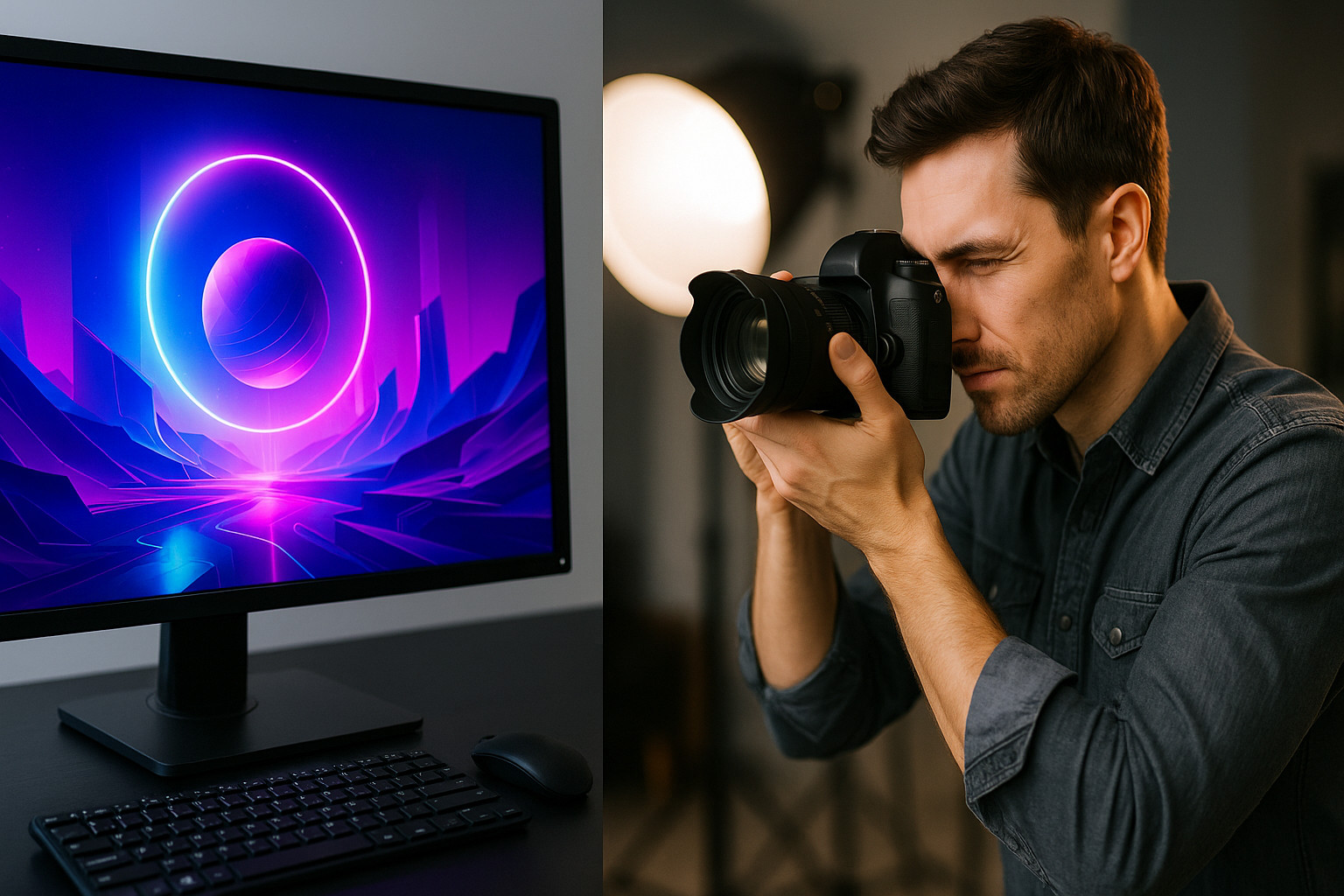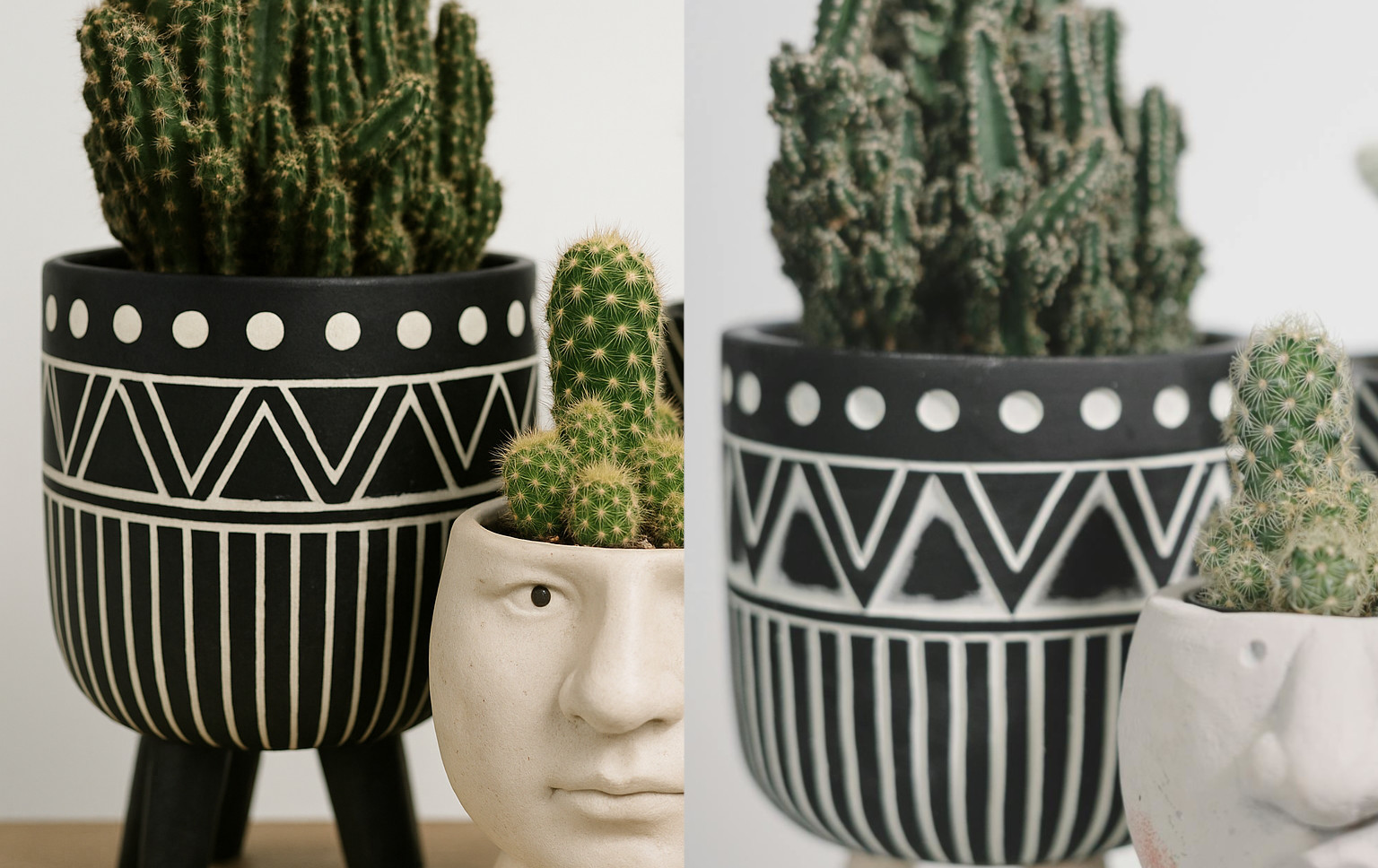AI vs. Traditional Photography: Which Visual Approach Works Best?
In a world powered by visuals, creatives—from marketers to storytellers—face a choice: go with AI-generated images or invest in traditional photography? Both have their place, each offering unique advantages. Here’s a streamlined look at when to use which—and how a hybrid approach might serve you best.

Picture this: you’re launching a sleek tech product. You could plan a full photoshoot—or describe your vision to an AI and get dozens of variations instantly. Which path fits your goals? Photography remains a gold standard for authenticity and emotional pull. AI, led by models like Flux in ComfyUI, offers rapid-fire creativity and scale.
By the end of this guide, you’ll understand:
- What AI images are and how they’re made.
- The benefits and tradeoffs of both methods.
- How to decide—or blend both—to elevate your content.
2. What Is AI-Generated Imagery?
2.1 The Tech Behind It
AI tools like Flux generate visuals from text prompts. These systems learn by studying vast datasets of labeled images and text.
2.2 The Process
- Training: The model learns visual patterns from massive datasets.
- Inference: You provide a prompt. The model converts noise into a coherent image.
- Output: You get high-res images in seconds, ready to use.
2.3 Why It’s Powerful
- Speed: Prompt-to-image in seconds.
- Cost: No gear, no crew.
- Flexibility: Infinite visual variations.
- Accessibility: Non-experts can create high-quality assets.
3. What Is Traditional Photography?
3.1 Defining the Craft
Photography captures the real—people, products, places—using cameras, lighting, and the photographer’s vision.
3.2 How It Works
- Tools: DSLRs, lenses, lighting rigs.
- Skills: Framing, exposure, focus.
- Editing: Post-work in Lightroom, Capture One, etc.
3.3 Why It Matters
- Authenticity: Real, human-driven moments.
- Image Quality: Detail, depth, color fidelity.
- Artistic Touch: Every photo reflects the creator’s eye.
- Trust: Real-world photos feel credible.
4. Pros of AI-Generated Images
- Lightning-fast production and iteration.
- Minimal costs—just software and time.
- Boundless creativity via prompt tweaking.
- No prior photo skills needed.
- Fine control over mood, tone, and lighting.
5. Cons of AI-Generated Images
- Oddities like warped hands or off reflections.
- Gray areas around copyright and attribution.
- Feels artificial—lacks lived-in realism.
- Popular prompts lead to repetitive aesthetics.
- Output can vary wildly by model and wording.
6. Pros of Traditional Photography
- Emotional depth and human connection.
- Superb resolution and fidelity.
- One-of-a-kind artistic styles.
- Builds brand credibility and transparency.
- Clear legal rights with model/property releases.
7. Cons of Traditional Photography
- Higher costs: gear, locations, talent, editing.
- Slower production timelines.
- Unpredictable variables like weather.
- Legal requirements add complexity.
- Less flexibility once the shoot is over.
8. Side-by-Side Comparison

| Factor | AI-Generated | Traditional Photography |
|---|---|---|
| Speed | Instant | Slower, multi-step process |
| Cost | Low | Equipment & personnel costs |
| Authenticity | Fabricated | Real-life moments |
| Variability | Unlimited | Setup-bound |
| Image Quality | Model-dependent | Camera-quality fidelity |
| Creative Control | Prompt-based | Full manual control |
| Legal Clarity | Often murky | Clear contracts & releases |
| Emotional Impact | Conceptual | Deep and relatable |
9. When to Use AI
- Fast ideation and prototyping.
- Visualizing abstract or futuristic scenes.
- Budget-conscious projects.
- High-volume needs (e.g., blogs, newsletters).
- Solo creators needing DIY visuals.
10. When to Use Photography
- Emotional storytelling: weddings, portraits, etc.
- Premium branding with high-end finish.
- True-to-life product visuals for commerce.
- Legally sensitive campaigns.
- Long-term brand asset libraries.
11. Best of Both Worlds: Hybrid Workflows
AI and photography don’t have to compete—they can collaborate.
- Concepting: Use AI to visualize styles, then shoot accordingly.
- Post-editing: Blend AI backdrops or textures into real photos.
- Touch-ups: AI tools for smoothing, enhancement, or creative overlays.
- Split Roles: Photographers shoot, AI specialists stylize.
12. Looking Ahead
12.1 Evolving Tools
- Next-gen models will blend text, visuals, and sound—delivering richer, near-photo-real scenes.
12.2 Ethical Progress
- Expect clearer regulations on AI datasets, attribution, and usage transparency.
12.3 Shifting Roles
- Photographers may lead as creative directors while AI handles execution. The visual space will open to more voices—and fierce competition.
Both AI and photography are essential tools. Use AI for speed, flexibility, and imagination. Use photography when emotion, detail, and authenticity matter. Or blend both for modern, efficient workflows. The future is visual—and it’s yours to shape. Stoxo offers a huge collection of free images with no restrictions. Take a look here stoxo.io